Introduction
As organizations increasingly adopt containerization to streamline application management, understanding the intricacies of Kubernetes becomes paramount. This powerful orchestration platform not only simplifies the deployment of containerized applications but also ensures their reliability and scalability through essential components such as deployments and services.
- Deployments maintain the desired state of applications, enabling efficient updates and management.
- Services facilitate seamless communication between application components.
With the market for Kubernetes projected to expand significantly, recognizing the synergy between these elements is crucial for organizations seeking to optimize their cloud strategies. This article delves into the fundamental roles of Kubernetes deployments and services, exploring best practices and insights that empower businesses to harness the full potential of this transformative technology.
Understanding Kubernetes Deployments and Services
Kubernetes, often known as K8s, functions as a robust orchestration platform for managing containerized software, reflecting its critical role in modern software development. Within this framework, deployments play a pivotal role in maintaining the desired state of software. They ensure that the specified number of replicas is consistently running, enabling seamless updates and version management for developers.
This functionality is especially important, as 54% of essential applications, including AI and machine learning workloads, depend on container orchestration for their deployment strategies.
In contrast, resources act as stable endpoints that enable communication between different application components. By abstracting the underlying pod infrastructure, functions ensure uninterrupted interaction, regardless of changes in pod states or their locations. This essential differentiation highlights the significance of both k8s deployment vs service within container orchestration, especially as organizations increasingly acknowledge the need for effective service health monitoring.
Recent findings indicate that 93% of organizations are either currently utilizing or planning to adopt containers in production, illustrating the widespread acknowledgment of container orchestration capabilities in enhancing application management efficiency.
Moreover, the market for containers and their security is projected to grow significantly, reaching USD 10,716.68 million by 2031, with a CAGR of 27.60%. This economic importance further highlights the pertinence of the technology in the industry. A notable case study titled 'Health Monitoring in Kubernetes' demonstrates how 93% of organizations leverage Kubernetes to provide essential health monitoring by automatically restarting unresponsive containers.
This proactive service oversight enhances user experience and reliability by ensuring continuous availability of health services. As we explore further into the nuances of these components, their interconnected roles in orchestrating systems become increasingly evident.
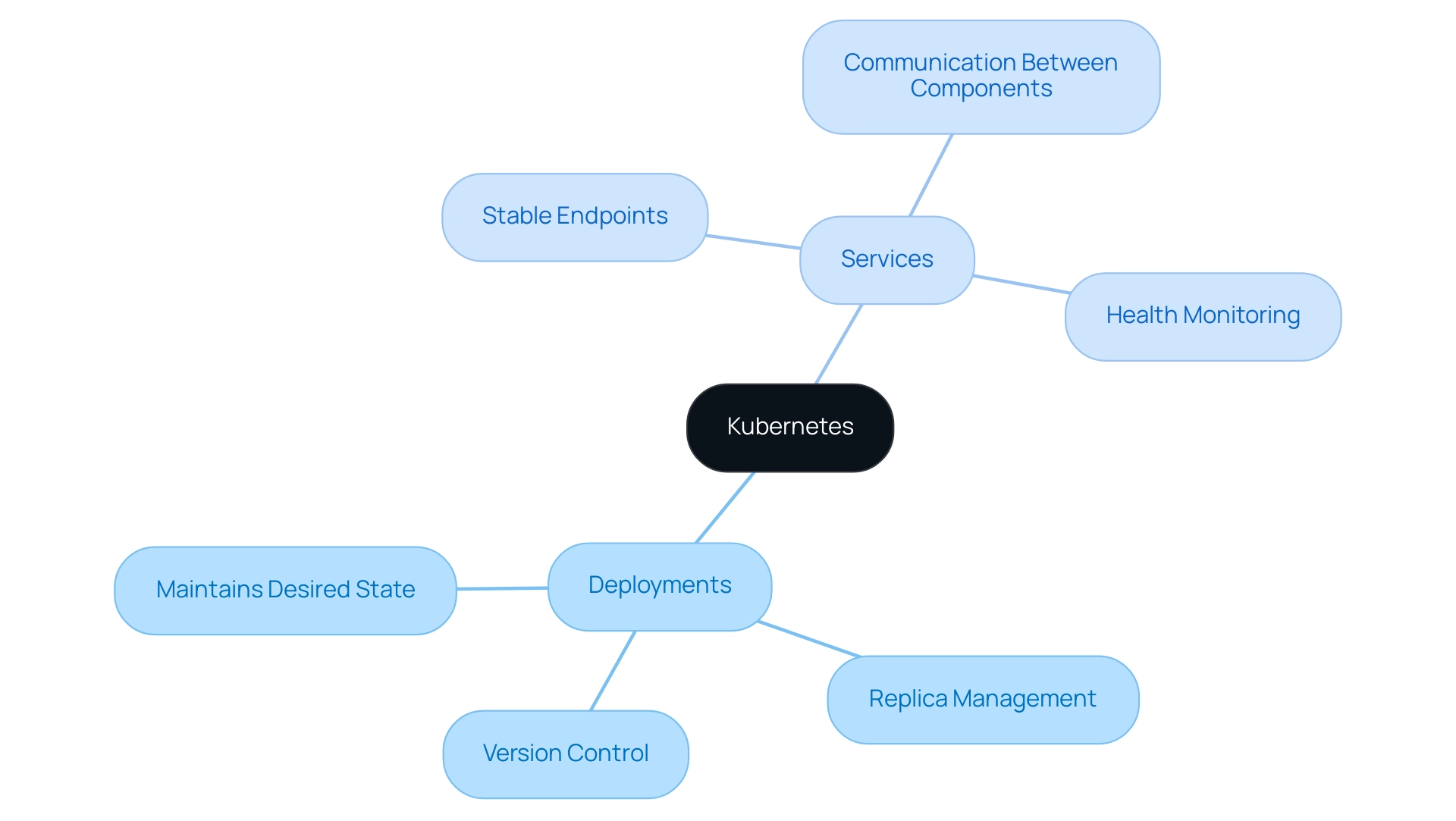
The Role of Kubernetes Deployments in Application Management
Container orchestrations are crucial for efficient software management, enabling developers to define the desired states of their systems with accuracy. Upon creating a deployment, the system autonomously manages the entire software lifecycle, which includes:
- Scaling
- Rolling updates
- The option to revert in case of failures
This level of automation is crucial for ensuring that systems remain consistently available and operate as intended.
For instance, when a new software version is released, the system can effortlessly carry out a rolling update, progressively substituting the earlier version while reducing downtime. This capability is particularly critical for organizations that prioritize high availability and swift development iterations. As per a report from the Cloud Native Computing Foundation (CNCF), 93% of organizations are now using or intending to adopt containers in production—indicating the increasing dependence on container orchestration solutions like those offered by Kubernetes.
Notably, only three percent of IT leaders expect their use of containers to decrease in the coming year, further underscoring the trend towards containerization. Furthermore, as of 2023, the system holds a 24.4% share of the container technology sector, emphasizing its importance in fostering innovation and efficiency in software oversight. With the container oversight market anticipated to hit USD 944 million by 2024, the shift towards container orchestration utilization is clear, emphasizing its significance as a fundamental element in contemporary software lifecycle oversight.
Commemorating its sixth anniversary on June 7, the platform continues to develop and influence the future of software management.
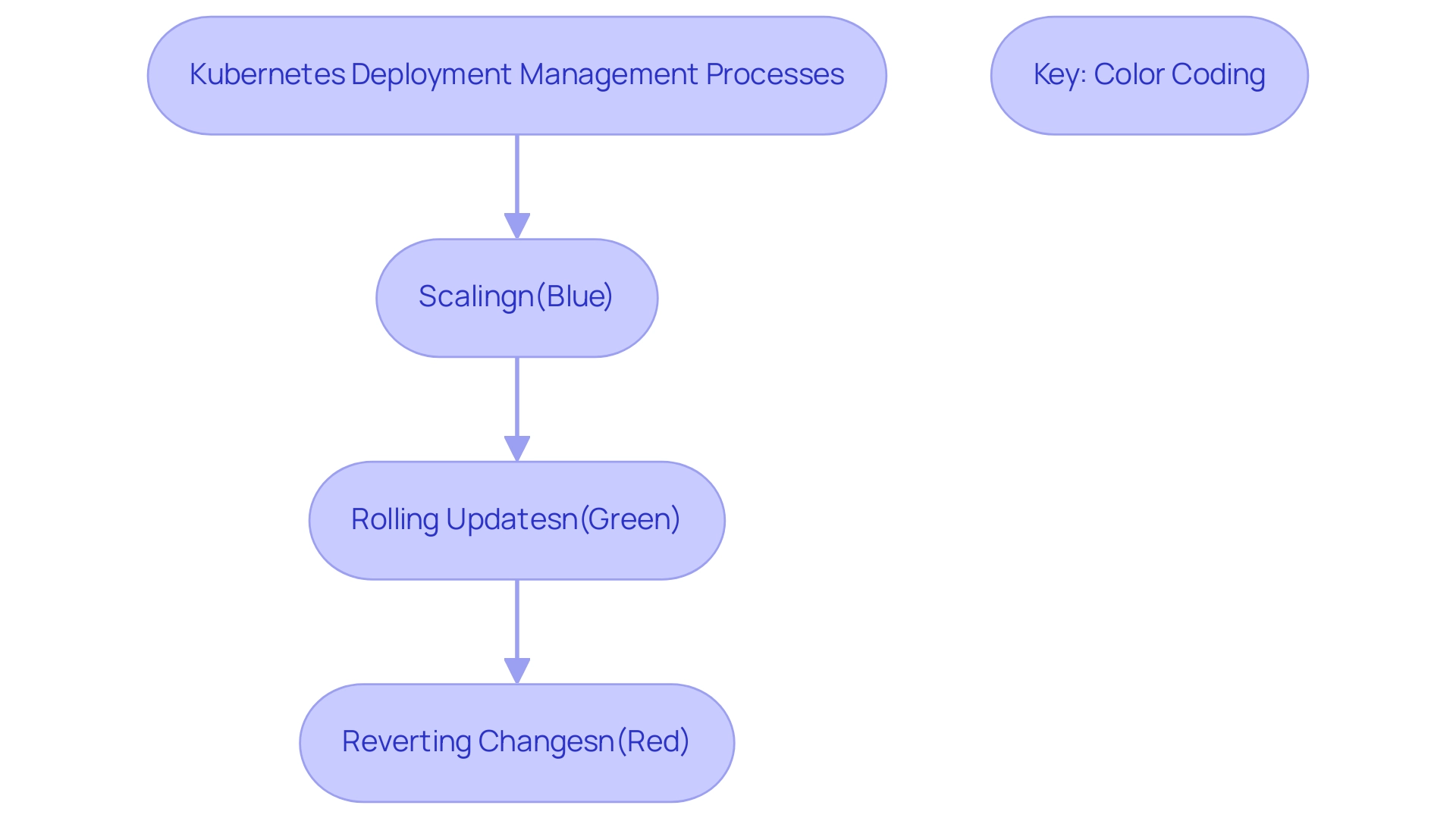
Kubernetes Services: Facilitating Communication and Load Balancing
Kubernetes functionalities act as crucial intermediaries for communication among various application components, ensuring stable access points that remain consistent despite changes in the underlying pods. These offerings can be categorized into distinct types, including ClusterIP, NodePort, and LoadBalancer, each customized for specific deployment scenarios. For instance, a Cluster configuration is primarily utilized for internal communication within the cluster, allowing components to interact privately.
Conversely, a Load Balancer is designed to expose applications to external traffic, effectively distributing incoming requests across multiple pods. This distribution is critical for achieving balanced load and high availability, thereby enhancing performance and reliability in production environments. Recent advancements in container orchestration services, including load balancing algorithms like those provided by IPVS, further enhance traffic efficiency, enabling optimized resource utilization and user experience.
The IPVS load balancing algorithms, such as Round Robin and Least Connection, exemplify sophisticated traffic management techniques that enhance the performance of container orchestration deployments. Additionally, with Prashant Gandhi's recent announcement on November 5, 2024, regarding new innovations for the VMware Avi Load Balancer, organizations can leverage cutting-edge solutions for improved load balancing. This newsletter issue is brought to you by Victoria Metrics — a fast and scalable open-source time series database and monitoring solution, emphasizing the significance of robust monitoring in container orchestration environments.
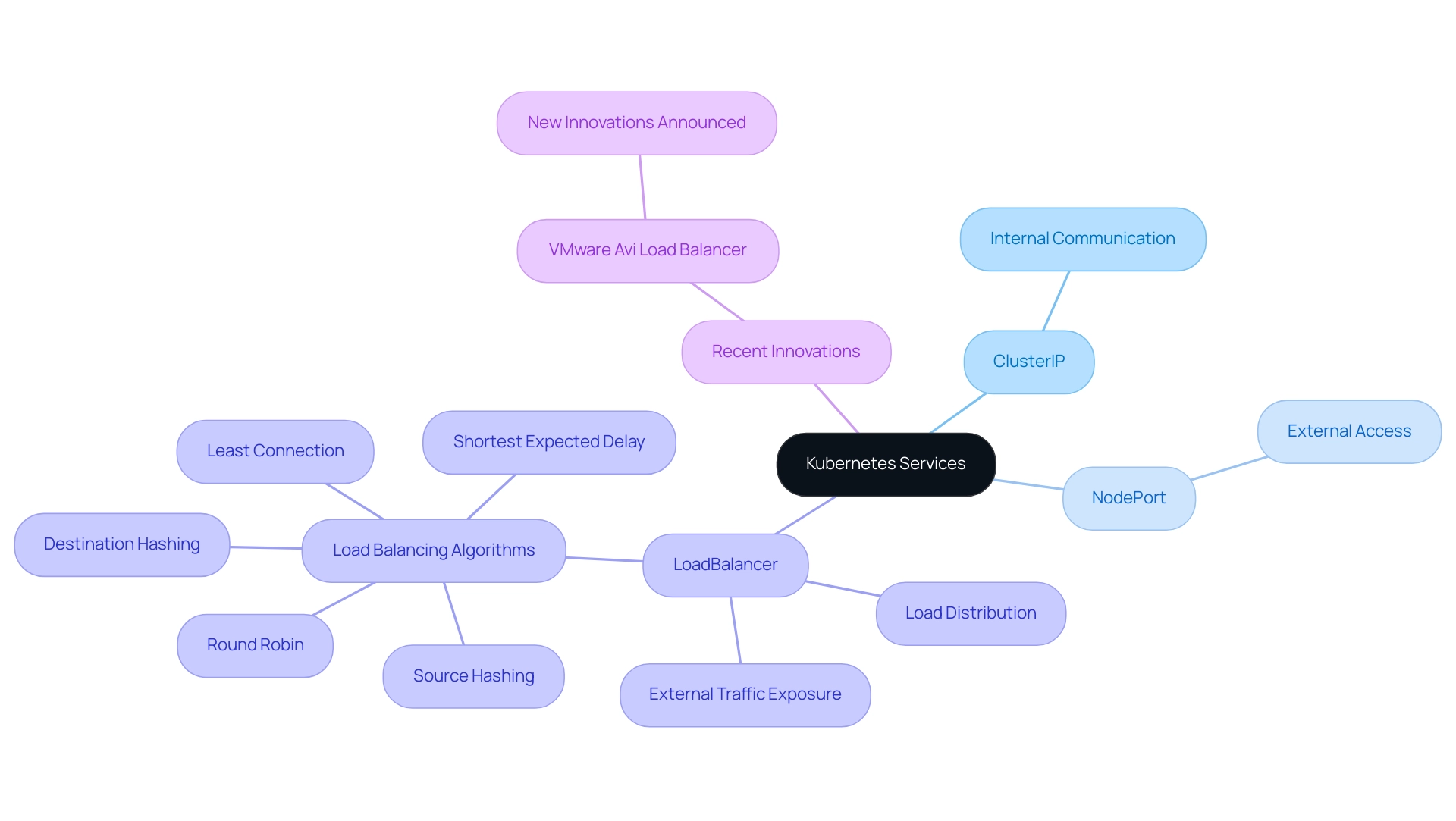
The Synergy Between Deployments and Services in Kubernetes
In a Kubernetes setting, the understanding of k8s deployment vs service is essential for the interaction between deployments and resources, guaranteeing both scalability and high availability of programs. Deployments are responsible for managing the state and lifecycle of instance occurrences, while solutions enable stable access to these instances through consistent endpoints. For instance, when a deployment is initiated, a corresponding system is typically configured to route incoming traffic to the newly created pods, thus maintaining a seamless user experience.
This synergy is particularly vital for organizations seeking to utilize container orchestration for microservices architectures, where systems comprise many interdependent services that require strong communication and coordination. The industry acknowledges this container orchestration platform as the standard for automating the deployment and management of such containerized applications, reflecting a significant shift in cloud strategies. With the market for containers and cloud-native security projected to grow at a CAGR of 27.60%, reaching USD 10,716.68 million by 2031, organizations that effectively integrate these elements position themselves for enhanced operational efficiency and cost savings.
As noted, 'the market for containers and Kubernetes security is projected to grow at a CAGR of 27.60%, reaching USD 10,716.68 million from 2023 to 2031.' Success stories from companies like Drift and Obsidian illustrate the tangible benefits of strategic cloud cost management, where Drift achieved a 30% reduction in cloud costs and Obsidian improved resource allocation efficiency by 25%. These outcomes highlight the significance of optimizing both k8s deployment vs service to achieve a resilient and cost-effective microservices architecture.
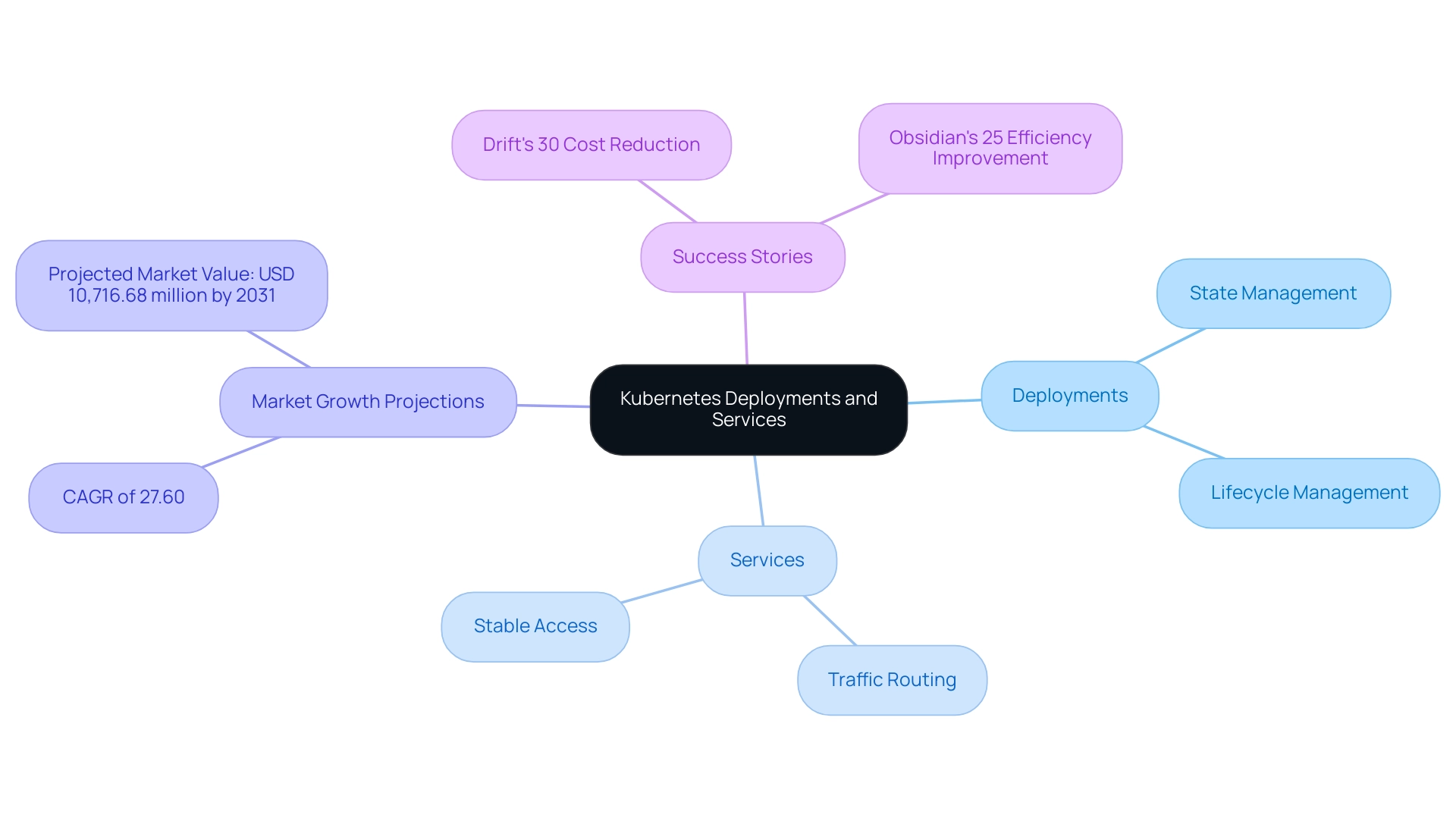
Best Practices for Managing Deployments and Services in Kubernetes
To effectively manage deployments and services within container orchestration, organizations must adhere to several critical best practices:
-
Version Control: Maintaining rigorous version control of deployments is essential for facilitating rapid rollbacks in the event of failures, thereby ensuring business continuity.
-
Health Checks: Implementing readiness and liveness probes is crucial to ensuring that only healthy pods receive traffic, significantly enhancing system reliability. The significance of health checks cannot be overstated, as they directly influence the overall performance of container orchestration environments. Given that nearly 94% of organizations experienced at least one Kubernetes security incident within the last year, robust health checks are vital for mitigating risks associated with application performance and security.
-
Resource Requests and Limits: Defining resource requests and limits for pods optimizes resource allocation and mitigates the risk of resource starvation. For instance, utilizing Limit Range can prevent the creation of up to 20,000 Config Maps in a cluster, ensuring efficient resource management.
-
Use Labels and Selectors: Effectively leveraging labels and selectors facilitates the organization and management of pods and resources, providing clarity and operational efficiency in complex environments.
-
Monitor Performance: Employing robust monitoring tools allows for the tracking of k8s deployment vs service performance, enabling proactive adjustments and troubleshooting. Staying current with container orchestration releases is also essential to benefit from bug fixes, security patches, and new features, ensuring that deployments remain secure and efficient.
By implementing these best practices, organizations can significantly enhance their container orchestration deployments, particularly when considering k8s deployment vs service, ensuring both reliability and scalability for their applications. Additionally, adopting efficient debugging strategies, as highlighted in the case study 'Debug Fast and Move On,' can help teams resolve issues three times faster, reducing error rates and accelerating overall development productivity. This case study underscores the importance of monitoring and health checks in maintaining high performance and quick resolutions in Kubernetes environments.
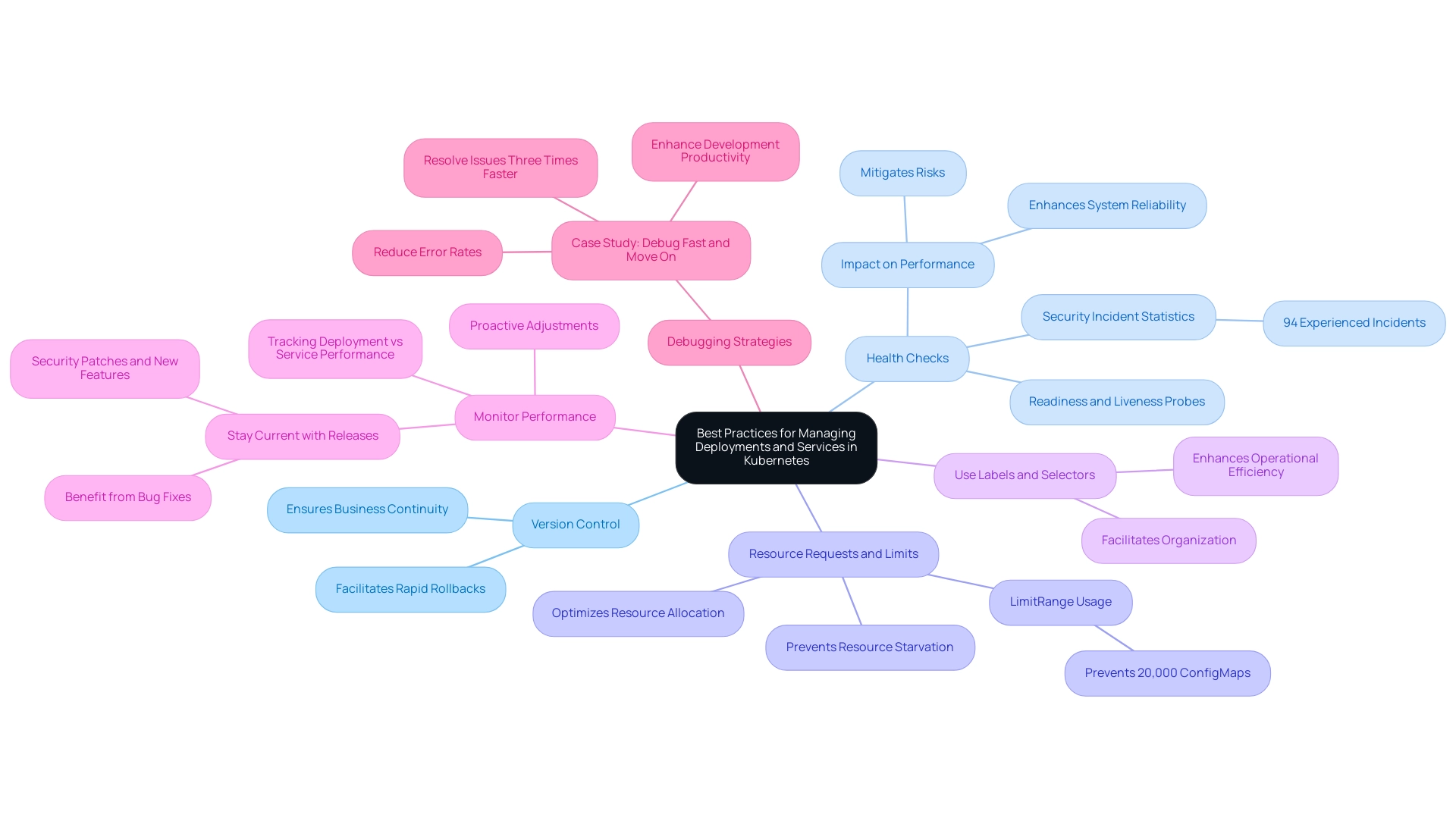
Conclusion
The integration of Kubernetes deployments and services is vital for organizations seeking to optimize their application management strategies. Deployments ensure that applications maintain their desired state, facilitating efficient updates and high availability, while services provide the necessary communication channels between application components. This synergistic relationship is particularly crucial in the context of microservices architectures, where seamless interaction among various services is paramount for operational success.
As the demand for containerization continues to rise, best practices in managing Kubernetes deployments and services become increasingly important. Implementing version control, health checks, and resource management strategies not only enhances reliability but also mitigates risks associated with application performance and security. Organizations that prioritize these practices are better positioned to leverage the full capabilities of Kubernetes, ultimately leading to improved operational efficiency and cost-effectiveness.
In conclusion, the future of application management lies in mastering the intricacies of Kubernetes. By understanding and effectively utilizing the roles of deployments and services, organizations can navigate the complexities of container orchestration, ensuring their applications are both scalable and resilient. As the market for Kubernetes continues to grow, embracing these technologies and best practices will be essential for maintaining a competitive edge in an ever-evolving digital landscape.




